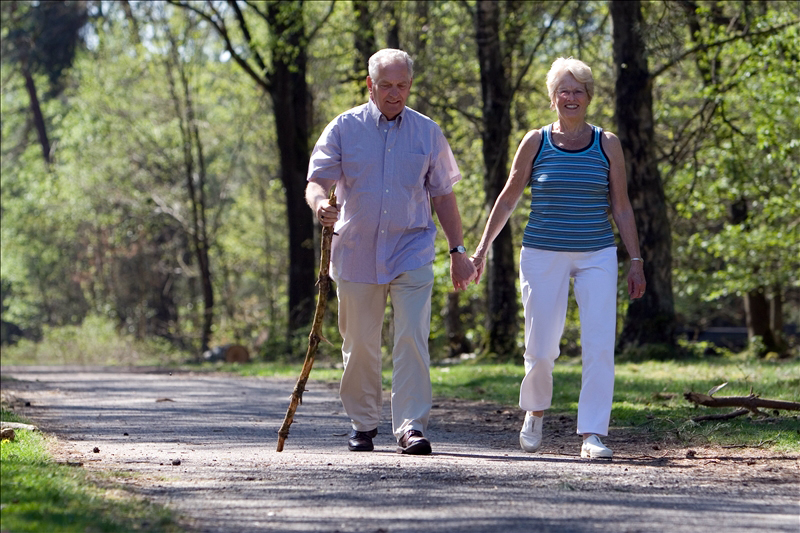You have likely heard about the life span revolution in the media. Many feel we are on the cusp of significantly advancing the length a person can live. When in fact, the actual average number of years a person is expected to live has been stable or slightly decreasing. This is entirely due to poor nutrition, lack of physical activity, and environmental factors. Although the promise of a long life is appealing, one must ask an important question: Is a long life really what you want if there is no quality? Increasing the number of years that you live is not as important as increasing the way you can live those added years. Spending an extra 5 or 25 years alive, but ill, is a curse not a blessing.
Today’s pharmaceutical giants, who fund much of this research, don’t want you to feel well during this time. Their intentions are likely not altruistic. Imagine a longer lived population that is chronically ill. Sounds like a lucrative opportunity, doesn’t it?
Now the good news! There are very simple and scientifically proven techniques that will allow you to improve your health span AND life span. Health span refers to the period of time during one’s life that you are generally healthy and free from disease.
Physical factors that address health span include strength, balance, flexibility, and endurance. All of these factors affect your mobility during your life. These same factors all contribute to your body’s physical resiliency. Maintaining your mobility is critical for all body functions and is fundamental in avoiding chronic illness.
3 Strategies to Start Right Now to Improve Health Span:
Weight Training
Weight training (in particular, barbell training) is a critical component in physical resiliency. Lifting appropriately heavy weights is applicable for almost everyone regardless of age and/or present health status. Weight training has positive benefits on: muscle strength; bone density; cardiovascular performance; neurologic performance and adaptability; mental and cognitive function; and proper hormonal regulation.
Barbell training is the most effective method due the progressive load on the skeletal system and the muscle pull which is exerted on the bone. It fights off frailty! It increases your body’s margin for error when illness or injury occurs. With proper guidance and the right exercise prescription/dosage, nearly everyone can improve in strength and benefit from weight training. To quote Mark Rippetoe, “Stronger people are harder to kill than weak people and more useful in general.”
Resistance training (other than through barbell training) can also be beneficial. An example of resistance training would be any type of pushing or pulling exercise that exerts a force on the muscle, which causes it to work harder than it would normally. The key to all training is that the system must be properly overloaded to produce the desired effect. Too little and you will not receive a positive benefit. Too much and you risk injury. This overload principle must guide all exercise routines if there is to be actual success and benefit from the program. Although any properly dosed/prescribed form of resistive exercise would be beneficial, the most effective exercises either activate large muscle groups and/or load the skeletal system. Examples include squats, lunges, and dead lifts.
High Intensity Training (HIT)
High Intensity Training (HIT) or High Intensity Interval Training (HIIT) involves performing short bursts (ranging from 30-60 seconds at a time) of activity followed by a 1-2 minute recovery. The 30-60 seconds should be at a high intensity, meaning that your rate of perceived exertion (RPE) is high and you’re breathing heavy.
The research involving HIT is ever evolving. Thus far, it appears that HIT may provide superior health benefits when compared to almost any other type of exercise. It has significant positive effects on hormone regulation, particularly Human Growth Hormone (HGH). It regulates insulin sensitivity and increases cardiovascular function (VO2 Max). It not only boosts metabolism, but it leads to greater fat loss than traditional forms of exercise.
There is ongoing research on its effects on all forms of chronic disease and illness, including Alzheimer’s disease, dementia, and cardiovascular disease. Preliminary evidence shows that HIT (when performed correctly) leads to superior benefits in much shorter bouts of exercise.
Walking after Meals
Diabetes and metabolic syndrome are major contributors to cardiovascular disease and most neurologic disorders, such as dementia. Heart disease remains the number one killer in men and women today. Regulation of blood sugar and insulin levels is such a critical aspect of being healthy in today’s sedentary, high fructose corn syrup filled lifestyle. Proper blood sugar and insulin regulation should be a primary concern of anyone desiring to live a long healthy life.
Walking after meals has been shown to stabilize blood sugar levels. It’s also an excellent way to boost metabolism and connect with friends and family. Frequent walking is the most important physical activity a person can engage in.
Although there are many aspects (mental, social, financial, physical, spiritual, and emotional) to address in order to optimize your health span, it is clear that strength training, high intensity training (HIT), and walking after meals is critical in maximizing your health span and aging well.
What are some practical actions that you can take today to improve your health span? Please leave your comments below.
I would encourage you to sign up to receive each week’s blog post sent directly to your e-mail–making it even easier and more convenient! Advice will be related to physical therapy related topics; physical fitness and performance; health and nutrition; injury prevention and rehabilitation; and successful aging and elder care. I will provide useful and practical types of “how to” information, including methods to safely self-treat and manage common physical therapy related conditions. In addition, you will receive priority when submitting questions to be featured in an upcoming blog post by e-mailing contact@thePhysicalTherapyAdvisor.com. Be sure to join our growing community on Facebook by liking The Physical Therapy Advisor!

